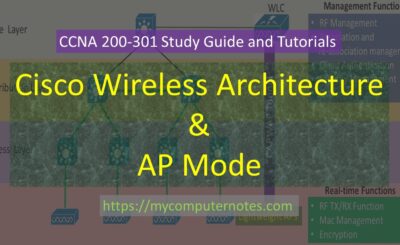In this section, we will be going to discuss what is Dynamic Routing, types of dynamic routing, routing protocols, and various terms related to dynamic routing.
What is dynamic routing?
Dynamic routing may be defined as a form of IP routing process where the routing tables are updated and modified automatically without the manual intervention of the network administrator.
Dynamic Routing uses various routing protocols to process the routing between the nodes. Routing protocols are a set of complex algorithms and is used to calculate the best and the shortest path from source to destination to forward the packets.
Characteristics of Dynamic Routing
Some of the characteristics of dynamic routing are:
- Routing tables are updated automatically.
- Each router shares its routing information to the neighbor router periodically.
- The network administrator’s task is reduced.
- It can handle a very large network.
- Routing update changes periodically, as the topology changes.
- The router does not bother about the destination network.
- It is also called adaptive routing because the routing information changes automatically as there is any change or introduction of a new network.
- Dynamic routing is said to be less secure as compared to static routing.
- It consumes more resources of the router such as memory, processor, bandwidth, etc.
Type of dynamic routing
Dynamic routing is of three categories:
- Distance Vector Routing
- Link State Routing
- Hybrid Routing (Advance Distance Vector)
Distance Vector Routing
As the name implies, distance vector routing uses the parameters: distance and direction to calculate the best possible path to forward the packet from source to destination. Distance is calculated by counting the numbers of routers in between the source and destination. Every router counts its adjacent router as a next-hop. The minimum number of hop count between the source router and the destination router makes the best possible path for routing.
Distance vector routing uses the Bellman-Ford Algorithm or Ford-Fulkerson algorithms to choose the best path. In distance vector routing, routing advertisements are received from the directly connected or the neighbor router and update its routing information periodically. The update process continues router to router till the destination is reached. It shares entire routing table information to its immediate neighbor router.
Examples of distance vector routing protocols are RIP v1, RIPv2, and IGRP.
Link State Routing
Unlike distance-vector, link-state routing does not rely on the neighbor router for routing information. Instead, it maps the overall state of the entire network that includes the topology, bandwidth, traffic congestion in a particular link, etc.
In link-state routing, each router retrieves information about itself, its directly connected link, and the state of that link. This information is passed from router to router, without changing the entire routing information of the adjacent router. Each router makes only a copy of the information received from its neighbor. Thus, every router has identical information and can independently calculate its best path for forwarding packets from source to destination.
Link State routing uses Dijkstra’s Algorithm. It is also referred to as the Shortest Path First (SPF) Algorithm.
Although link-state is more complex than distance-vector, however, it is more reliable and minimizes the shortcomings of distance vector routing. The basic functionality of link-state routing are:
- Every router establishes an adjacency relationship with its neighbors.
- Link state advertisements (LSAs) are sent by each router to its neighbor
- Each router stores a copy of all the LSAs as a database. These databases in all routers are identical.
- Each router maintains a complete topological database, also called the link-state database.
- Each router calculates the shortest path to each network using Dijkstra’s Algorithm and enters this information into the route table.
Examples of link-state routing are OSPF, IS-IS, etc.
Hybrid Routing
It is a combination of both distance vector and link-state routing. Basically, hybrid routing is considered to be the advanced distance-vector, however, it also contains some of the features of the link-state routing protocol.
An example of a hybrid routing protocol is EIGRP. Enhanced Interior Gateway Routing Protocol has the features of both the distance vector and the link-state routing. It does not send Link state advertisement, but it sends traditional distance vector routing information to the neighbor router.
It synchronizes with the routing updates of the neighbor router. After that, it sends a specific link-state update to its neighbor.
Comparison between distance-vector, link-state, and hybrid routing
| Distance Vector | Link State | Hybrid |
| Uses Bellman-Ford Algorithm | Uses Dijkstra’s Algorithm | Uses Dual Algorithm |
| Periodic Updates | Incremental updates | Incremental updates |
| Support Classful addressing | Support Classless routing | Support Classless routing |
| Complete routing tables are exchanged | Only missing routes are exchanged | Only missing routes are exchanged |
| Updates are advertised through broadcast | Updates are advertised through multicast | Updates are advertised through multicast |
| Less Overload | More overload | Less overload |
| Configuration is easy | Configuration is difficult | Configuration is easy |
| Examples: RIP v1, RIP v2, IGRP | Examples: OSPF, IS-IS | Examples: EIGRP |






